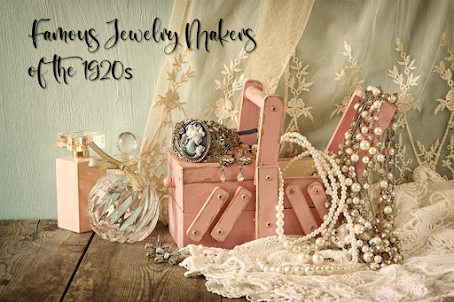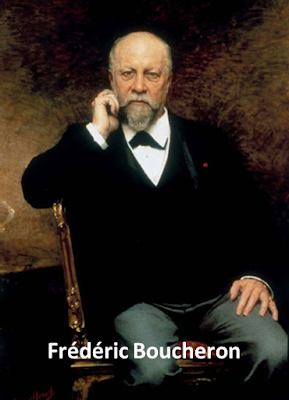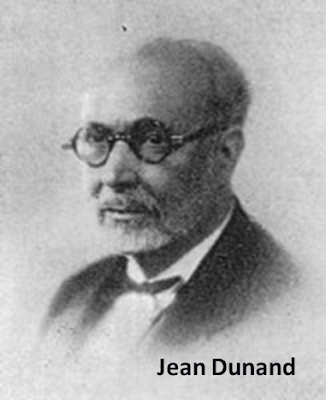It was the Jazz Age of the 1920s, an era that heralded the beginnings of conscious awareness of unconventional costume jewellery. During this time, the Art Deco movement also made an impression on jewellers. Jewellery designs were influenced by events like the discovery of King Tutankhamun’s tomb, African art, and the Avant-Garde art movement. They were largely accepted by the flapper generation who frequently wore Art Deco-inspired jewellery and dazzling clothing.
To this swinging generation, it was all about femininity and accessorizing, and the movement provided design inspiration for these. Jewelry, they say, was meant to capture the eye and command attention.
The style was characterized by bold colour contrasts, geometrics, clean lines, and stylized motifs. There were long strands of pearls, brooches, strings of round beads, ornate bangles and wide embellished bracelets, earrings with tassels, and loop necklaces.
Today, early 20th-century art deco-inspired costume jewellery still remains incredibly popular.
Some Famous Jewelry Designers of the Twenties
While some of the jewellers mentioned below have been known for their designs before the roaring twenties, many were at their peak during this era and made their mark in the jewellery design business. Their names still resonate among jewellery makers and collectors of vintage jewellery.
The following are jewellery designers (in no particular order) famous for their creations.
Frédéric Boucheron
His jewellery pieces are works of art and were designed to fit the reigning Art Deco designs of the 1920s. Before then, in the late 19th century, Boucheron was considered the pioneer of “modern jewellery” who revived an engraving technique that had been forgotten since ancient times. He soon became famous for the extraordinary designs and quality of his precious stones which included diamonds engraved with flowers or arabesques, and colourful gemstones (sapphires, rubies, lapis lazuli, coral, hematite, onyx, emeralds, and rock crystal) encircled with geometrically arranged diamonds.
Boucheron jewellery designers and makers enjoy the patronage of royal families and the custom of Hollywood icons like Dietrich, Garbo, and Rita Hayworth.
Mario Buccellati
In 1919, Mario Buccellati, also known as “The Prince of Goldsmiths”, acquired the family jewellery company and renamed it “Buccellati”. He was a famous jeweller who marketed his creations through exhibitions that helped him meet and make customers of affluent clients from all over. Mario Buccellati was so well patronized, he opened many branches around the world.
His jewellery designs featured elaborate gemstone works suggestive of the Art Nouveau and Old Hollywood eras. They highlight animal and insect forms, created out of pearls. He is also famous for his “gold jewellery and exquisite silver objects” and the combinations of precious metals (silver & gold, and platinum & gold).
Coco Chanel
Chanel’s jewelry designs may have been considered innovative in the 1920s, but the works were revolutionary, radical, and bold, a new style that consisted of high-end components combined with lower-priced materials. Before that time, wearing costume accessories was considered a fashion faux pas because they were perceived as cheap and belonging to women who couldn’t afford genuine pieces. Unperturbed by the opinion of the status quo, she developed her radical design concept of mixing gems and other precious stones with faux ones. The results and responses were brilliant.
Piling bracelets and bangles, stacking faux pearl necklaces, layering an unprecedented number of brooches, and adorning cuff bracelets; fashionistas were awed by this expressive and playful new look. Coco Chanel’s awesome combinations were and still are what costume jewellery is all about. Each piece she crafted was the signature finishing touch; a perfect complement to the already dazzling outfits of the flapper generation of the twenties.
Elsa Schiaparelli
After moving to Paris in the 1920s and establishing a Fashion House in the late 20s, Schiaparelli began making costume jewellery along with her other lines of clothing, perfume and other fashion accessories. She believed that costume jewellery was a vital part of fashion and style, an art form in its own right. Her early works are often portrayed as whimsical, glamorous, and extremely stylized.
Elsa Schiaparelli believed that costume jewellery was an integral part of fashion design as well as an art form in its own right. Elsa’s jewellery was whimsical, imaginative, and innovative often made with bright, colourful glass stones. Many of her designs are inspired by nature, the circus, astrology, and native African art.
Gerard Sandoz
One of the most famous jewellers of the 1920s, Sandoz was well known for his elaborate geometric designs. His bold and dramatic creations made him recognized as one of the forerunners of the Art Deco style of jewellery. Being an artist, he incorporated his bold and strong artistic styles into his jewellery, making each piece a beautiful work of art. In many of his popular works, Sandoz paired metals with gemstones like onyx, lapis lazuli, coral, and hematite.
Jean Dunand
Dunand was popularly known for his extensive use of lacquerware (a decorative-coating technique) in his design elements. He used it for many of his works, including vases, furniture, and most especially, costume jewellery. His creative designs of lacquerware jewellery made his creations trendy and a must-have in the twenties. Josephine Baker, one of the most popular music hall entertainers in France who took Paris by storm in the 1920s wore his famous lacquerware jewellery, a wide cuff bracelet and a circular neck collar. This stunning jewellery set designed with black, yellow, and red colours made Dunand's jewellery famous. He was also one of the forerunners of the Art Deco style.
Miriam Haskell
This American designer, Miriam Haskell, is in the top ten jewellery designers of the time. She designed costume jewellery that was affordable to 1920s women and worked in partnership with Frank Hess who was a part of the birthing of colourful jewelry designs. Frank Hess, her chief designer, was previously a young window dresser at Macy’s. Their partnership has been responsible for the finest handmade costume jewelry ever created.
Hollywood stars like Joan Crawford and Lucille Ball, and fashion-conscious women loved the unique style and characteristics of Haskell’s designs and wore her jewellery widely. Her jewellery has also appeared in films, on tv shows, and in stage plays.
Napier
Napier jewellery was the rave in the 1920s. They made pieces in Art Deco style and introduced classy and elegant designs to fashion accessories lovers. Although Napier Jewelry is no longer a top brand, its jewellery is still highly valued and sought after by vintage-inspired fashion-conscious individuals, and jewellery collectors.
The fashion industry was dominated by their eclectic bold designs which featured spectacular geometric and floral patterns made from faux gemstones, imitation pearls, glass, and plated metals. They are also recognized for their sterling silver works. Pieces were large and chunky and were a deviation from the typical designs of the time. This helped them make a positive impact on the fashion scene.
Napier was one of the first brands to make costume jewellery available and accessible to the masses.
Paul Emile Brandt
Paul-Emile Brandt was born in Switzerland but moved to Paris, France at a young age to study under Chaplain and Allard. He started his own business outfit in the 1910s, making Art Nouveau-style jewellery. After World War I, Brandt began creating jewellery in the Art Deco style. His designs are characterised by neutral palettes with white gold and diamonds, offset with onyx stone or black lacquerware.
By the 1920s, he began to work with precious stones and lacquer work. He created jewellery designs made with inlaid lacquered eggshells and brooches set with calibre emeralds in characteristic art deco styles. He describes his jewellery-making as “... jewellery of great design and great construction...”.
By the 30s, Paul Brandt started to produce hand jewellery – bracelets, bangles, rings, and neck jewellery - necklaces and pendants that featured relief work with geometric shapes.
Tiffanys
The company was founded by Charles Lewis Tiffany in 1837. When he passed away in 1902, his son Louis Comfort Tiffany became the company’s first official jewellery design director, while Tiffanys became a design icon during the Art Nouveau and Art Deco periods of the early 1900s.
Around this time, the Art Nouveau movement was gaining ground. Louis’ designs featured nature-inspired pieces in Art Nouveau’s style. His pieces of jewellery were majorly made with enamels, gemstones, and even glass.
Soon, the Art Deco era began and saw an absolute passion for all things Tiffanys. The jewellery makers became the arbiter of fashion and style as brilliant diamonds and lustrous pearls adorned the silhouettes of Hollywood’s silver screen actors. They became the screen darlings of the Jazz era – nothing burned brighter on a black-and-white screen than Tiffany’s dazzling jewels.
Fashion Designer Related Articles










No comments:
Post a Comment